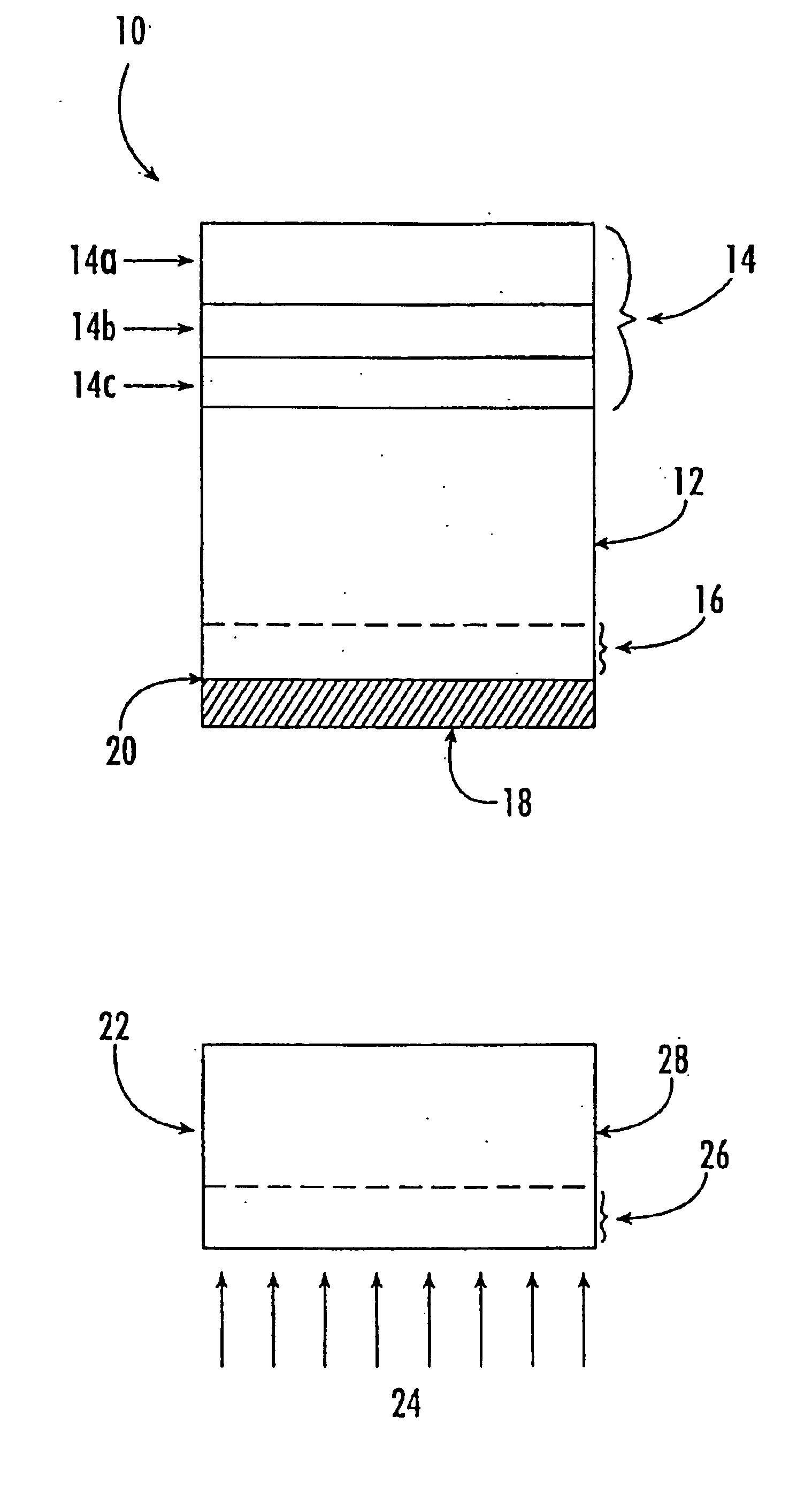Low temperature formation of backside ohmic contacts for vertical devices
- Summary
- Abstract
- Description
- Claims
- Application Information
AI Technical Summary
Benefits of technology
Problems solved by technology
Method used
Image
Examples
Embodiment Construction
[0023]The present invention is a semiconductor device incorporating an ohmic contact and a method of forming the ohmic contact.
[0024]It will be understood by those familiar with wide bandgap semiconductors, such as silicon carbide, and semiconductor devices formed therefrom that the invention is most useful in making a semiconductor device and ohmic contact utilizing n-type or p-type silicon carbide (“SiC”). Accordingly, for ease of explanation, the following description of the invention and examples will be directed toward an embodiment of the invention utilizing SiC. Those skilled in the art, however, will readily recognize that the invention may be easily adapted for use with other semiconductor materials such as silicon, gallium nitride, aluminum gallium nitride, and indium gallium nitride. As used herein, aluminum gallium nitride and indium gallium nitride include compounds where the mole percents of aluminum and gallium or indium and gallium equal 1.
[0025]In a broad aspect the...
PUM
 Login to View More
Login to View More Abstract
Description
Claims
Application Information
 Login to View More
Login to View More - R&D
- Intellectual Property
- Life Sciences
- Materials
- Tech Scout
- Unparalleled Data Quality
- Higher Quality Content
- 60% Fewer Hallucinations
Browse by: Latest US Patents, China's latest patents, Technical Efficacy Thesaurus, Application Domain, Technology Topic, Popular Technical Reports.
© 2025 PatSnap. All rights reserved.Legal|Privacy policy|Modern Slavery Act Transparency Statement|Sitemap|About US| Contact US: help@patsnap.com


